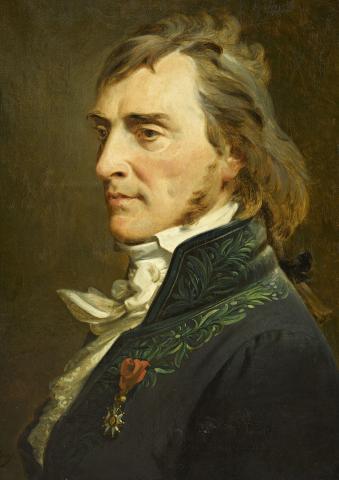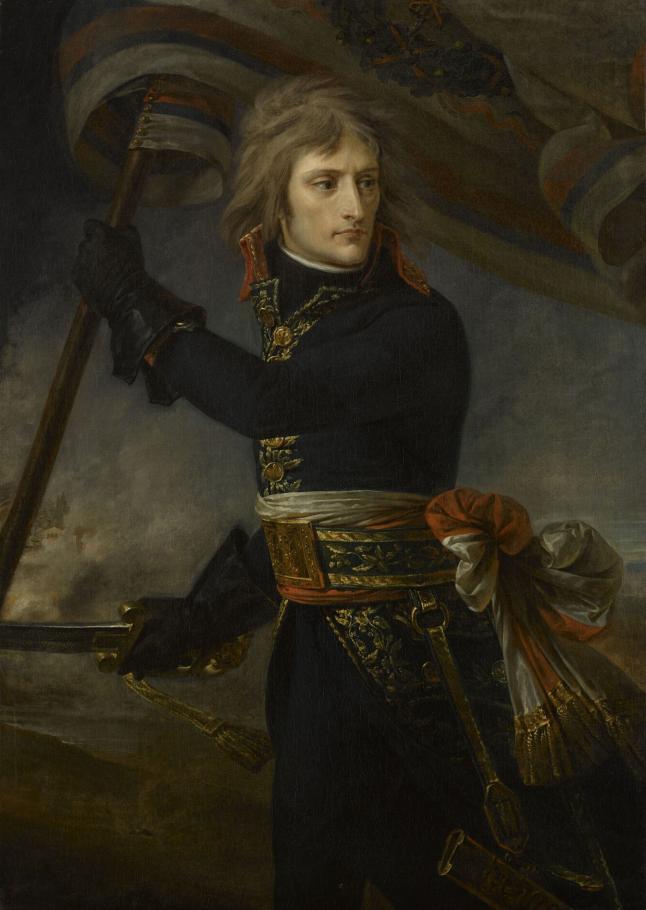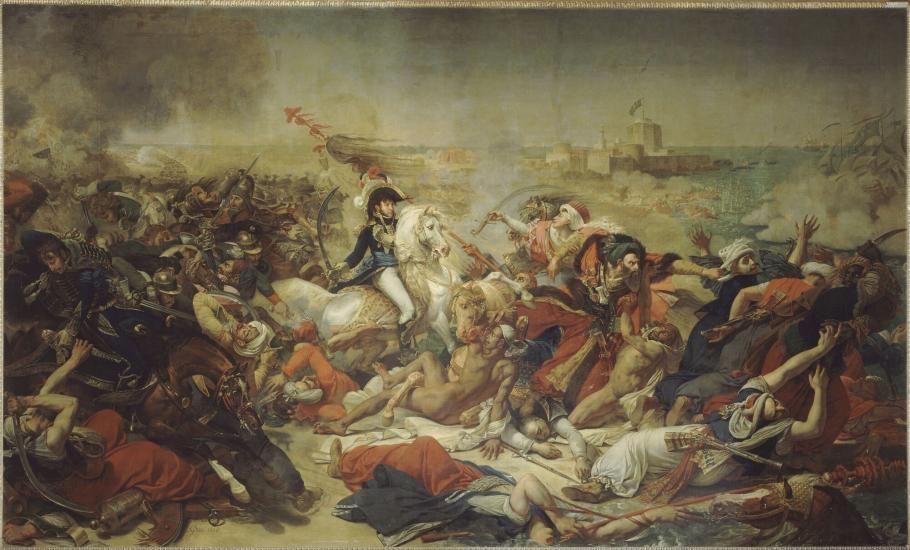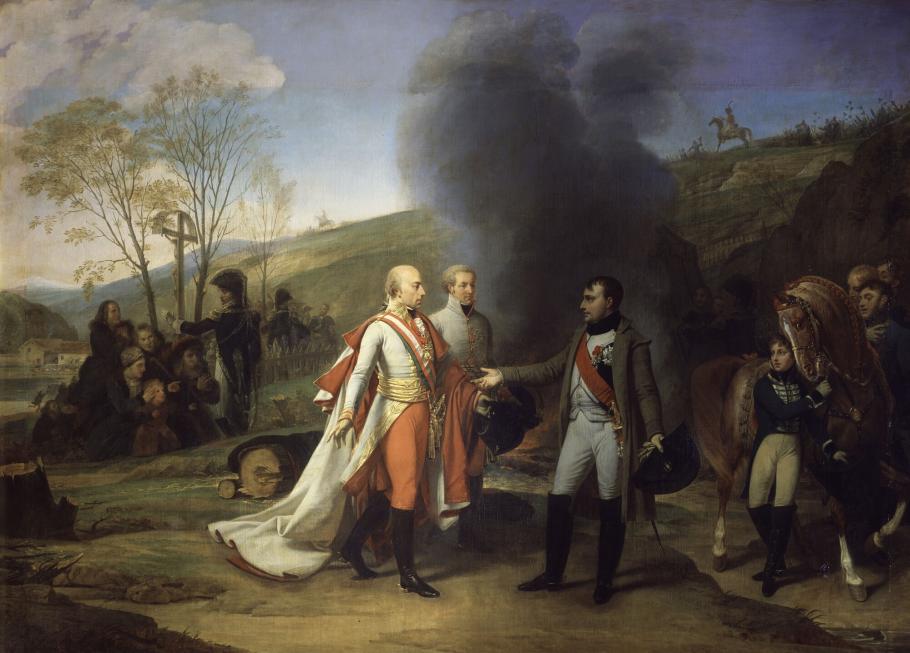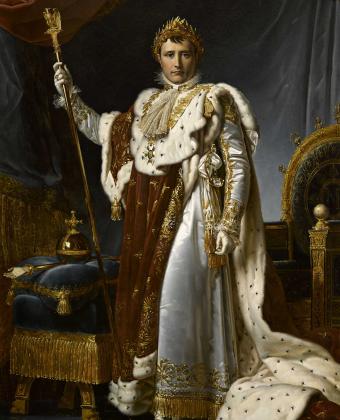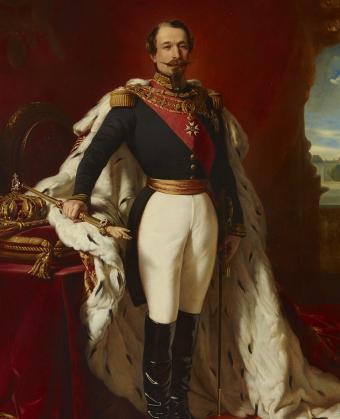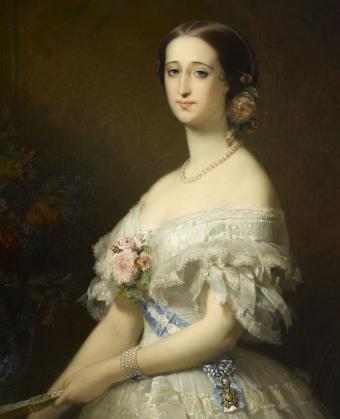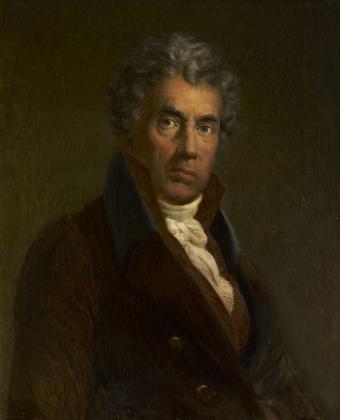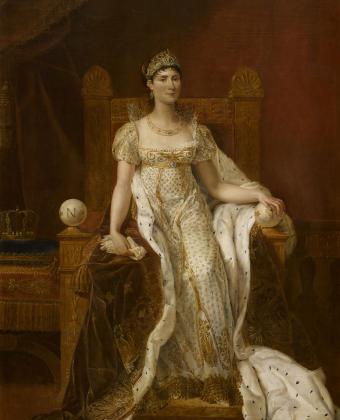Early fame
Gros studied under David. Although he failed to obtain the Prix de Rome in 1792, he nevertheless decided to leave for Italy. In 1793 he received his passport with the assistance of his master. He moved to Florence and then Genoa, supporting himself through commissions for portraits until his decisive meeting in November 1796 with Joséphine Bonaparte, wife of Napoleon, who was on her way to Milan. This meeting paved the way for his brilliant career as a portraitist and historical painter in the service of Bonaparte and his entourage.
Bonaparte at the Pont d'Arcole
His first masterpiece was the portrait of Bonaparte at the Pont d’Arcole (1796), which was exhibited at the Paris Salon of 1801, quickly earning him fame.
Self-portrait © RMN-GP (Château de Versailles) / © Franck Raux
Antoine-Jean Gros
1795
In search of a masterpiece
A few years later, his painting Bonaparte Visiting the Plague Victims of Jaffa, which was aimed at silencing rumours that the conqueror had abandoned the sick in Syria, achieved tremendous success. However, Gros was not able to repeat this success, even with his great work, Napoleon on the Battlefield of Eylau (1808), which he produced for a competition organized to celebrate this half-victory for the Emperor.
Under the French Empire, the artist’s work, which featured historical paintings and portraits, witnessed a great success. After the fall of Napoleon’s regime, the artist, on a constant search for a new masterpiece and plagued by chronic depression, was unable to become the master of the French school, a position that was vacant due to the exile of his master, David. Despite the growing Romantic movement, which he had previously helped to initiate, he retreated into extreme Neoclassicism, before ending his life in 1835.
His works
The Museum at Versailles exhibits much of Gros’ work.
The Coronation Chamber is home to the Battle of Aboukir (1806), commissioned by Murat. A few of his Gros’ famous Napoleonic paintings can be viewed in the Empire Rooms:
Napoleon’s Speech to his Army before the Battle of the Pyramids (1809); the Interview between Napoleon I and Francis II of Austria After the Battle of Austerlitz (1806-1812); Napoleon During the Surrender of Madrid (1809-1810). Many of his portraits are also exhibited: General Bonaparte at the Pont d’Arcole (1796); Duroc, Grand Marshal of the Palace (1806); Daru, Minister of the War Department (1813); Jérôme Bonaparte, King of Westphalia, and Catharina of Württemberg (1808); the Marshal Victor, Duc de Belluno (1812); General Legrand (1810) and his wife, née Henriette Scherrer (1814); as well as the collective portrait of Napoleon I Awarding the Legion of Honour Crosses to Artists at the Salon of 1808 (1808, unfinished). Other works are from the Bourbon Restoration: Departure of Louis XVIII from the Palace of the Tuileries in March 1815 (1817); the Duchess of Angoulême (1817); Charles X Reviewing His Troops at the Camp of Saint-Léonard in 1825 (1827).



